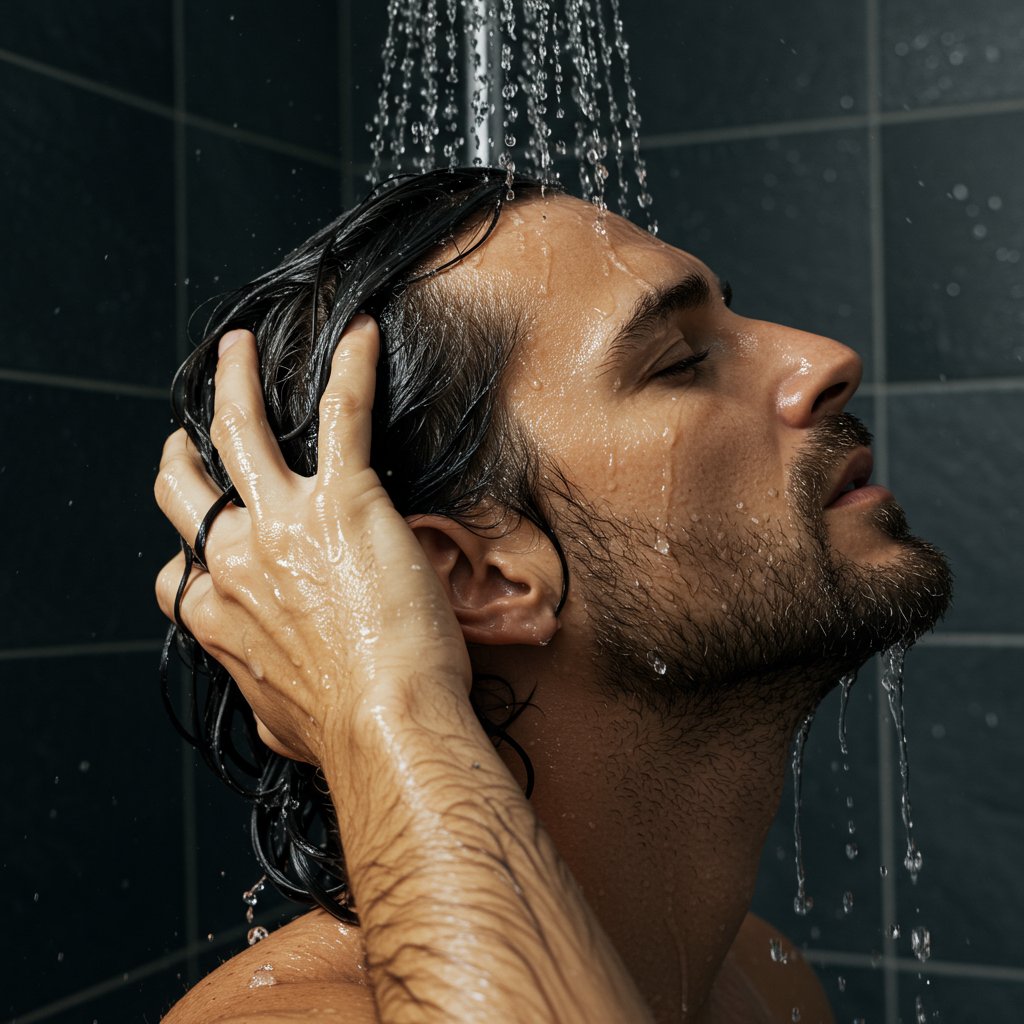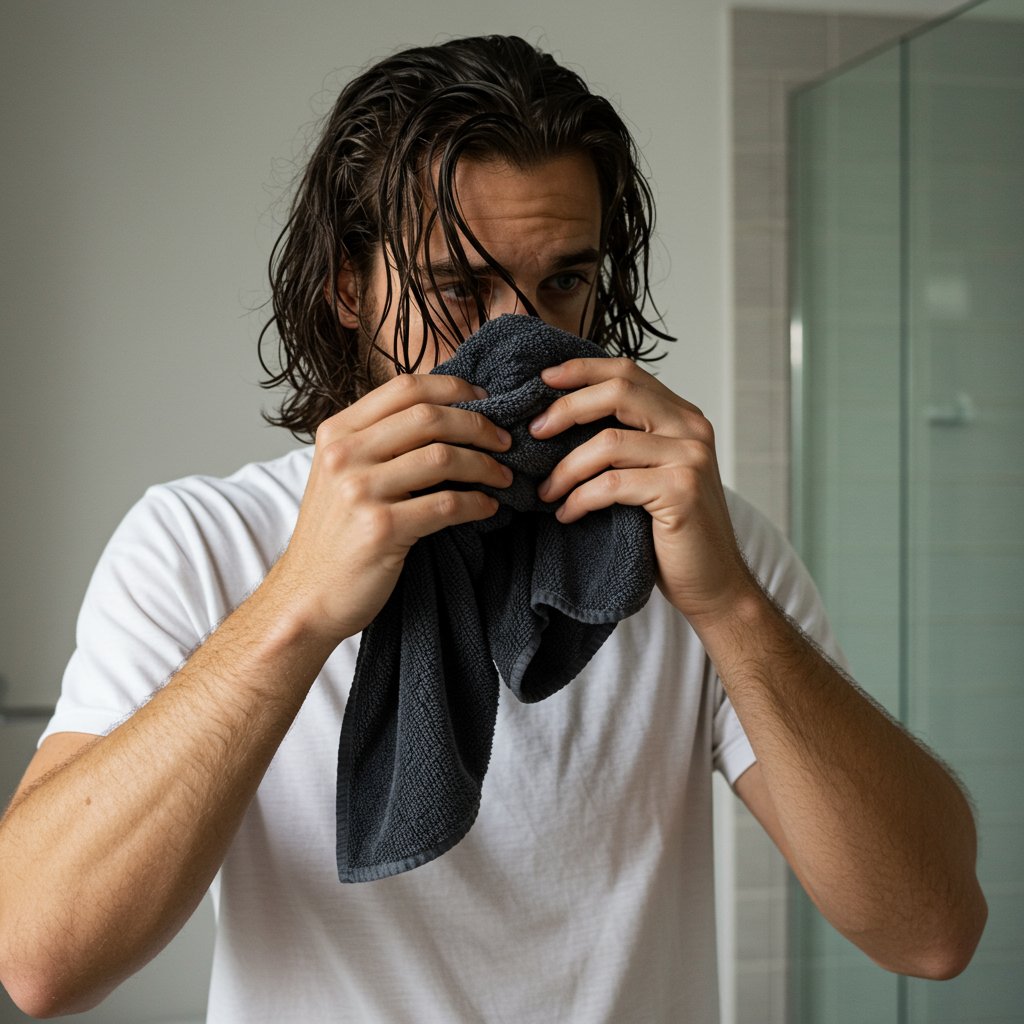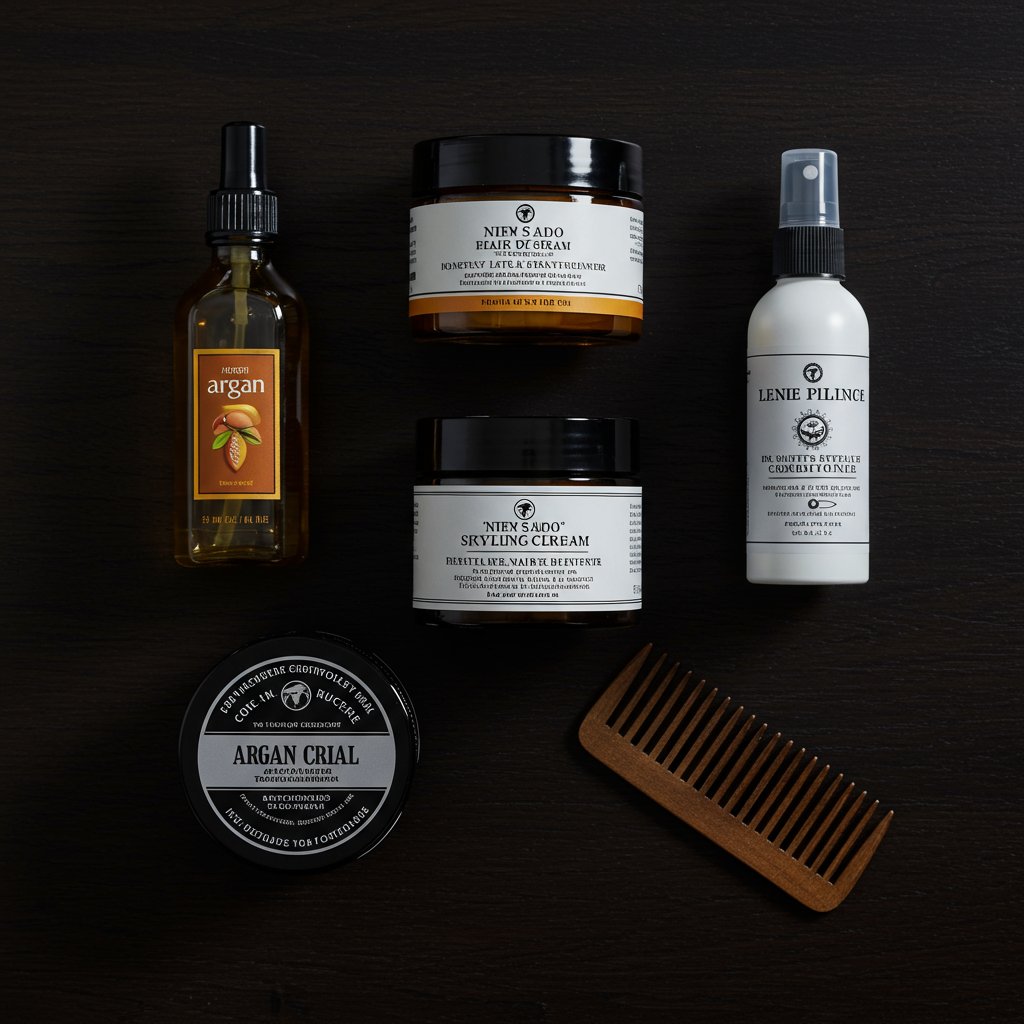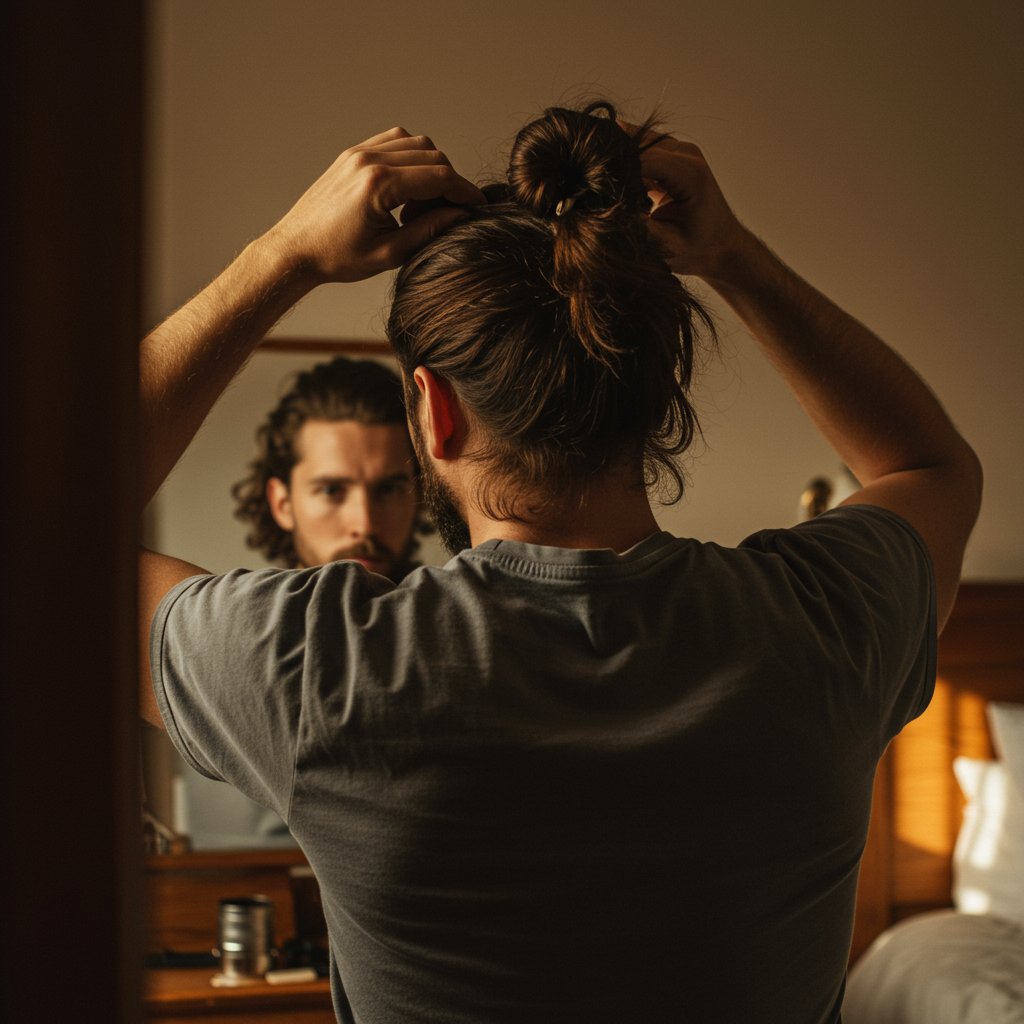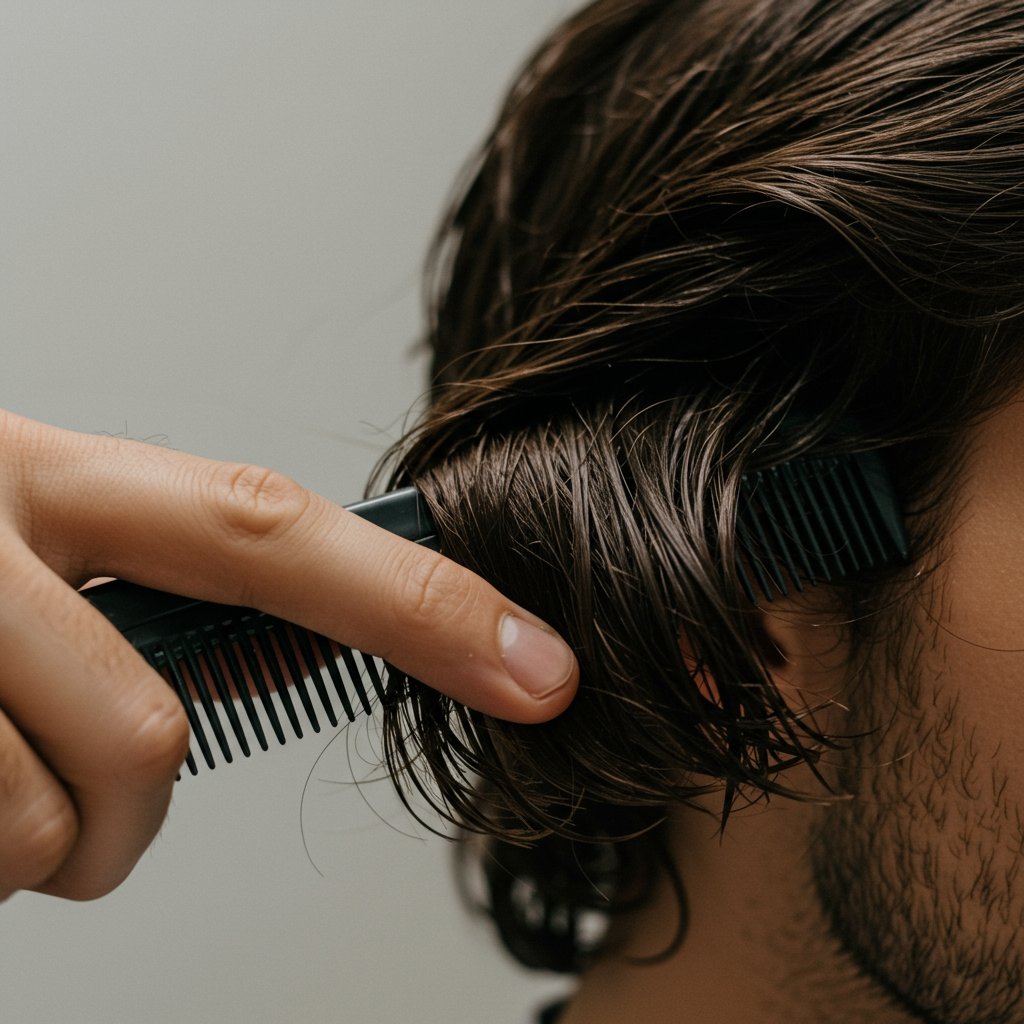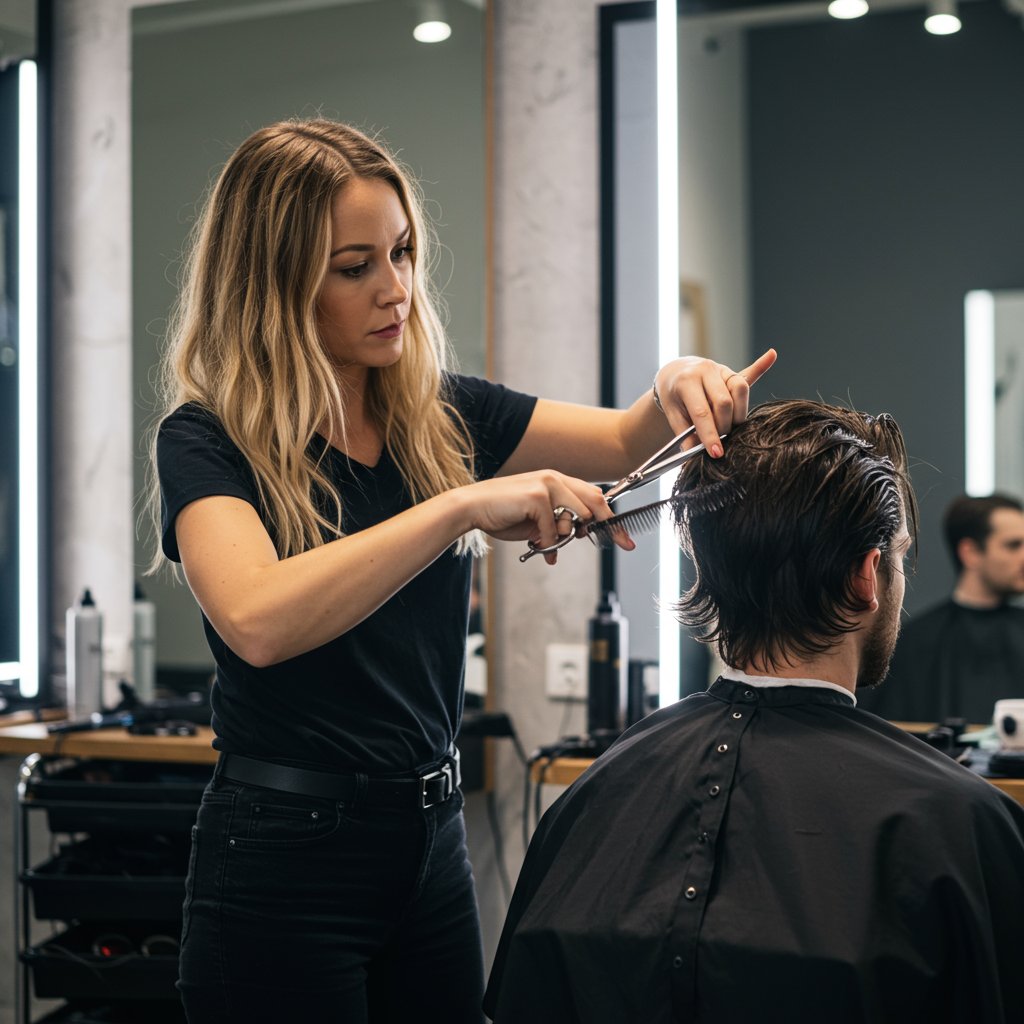Embracing the Flow: A New Era for Long Hair on Men
Growing long hair is a journey of patience and a statement of personal style. Once seen as unconventional, long hair on men has surged into the mainstream, sported by everyone from Hollywood actors to boardroom executives. It signifies confidence, individuality, and a departure from the traditional. However, achieving and maintaining a healthy, great-looking mane is more than just letting it grow. It requires a dedicated routine, the right products, and a bit of know-how. This comprehensive guide will walk you through every aspect of styling and caring for long hair on men, transforming the process from a challenge into an art form. Whether you're just starting your journey or are a seasoned veteran of long locks, these expert insights will help you keep your hair looking its absolute best.

From establishing the perfect washing schedule to mastering everyday styles that are both practical and polished, we will cover the essential pillars of long hair maintenance. We'll delve into the specific products that can make a world of difference, tackle common problems like frizz and split ends head-on, and highlight the non-negotiable role of professional salon visits. Consider this your definitive resource for ensuring your long hair is not just long, but also strong, healthy, and impeccably styled, reflecting the commitment you've put into growing it.
The Foundation: Perfecting Your Washing and Conditioning Routine
The cornerstone of healthy long hair begins with how you wash it. Over-washing is a common mistake that can strip your hair and scalp of natural oils (sebum), leading to dryness, brittleness, and even an overproduction of oil as your scalp tries to compensate. For most men with long hair, washing two to three times per week is the ideal frequency. This allows your natural oils to nourish the hair shaft while keeping your scalp clean. On non-wash days, a simple rinse with water can be enough to refresh your hair.
Choosing Your Arsenal
Selecting the right shampoo and conditioner is crucial. Look for sulfate-free formulas, as sulfates are harsh detergents that can cause dryness and fade color. Instead, opt for products with natural, hydrating ingredients like aloe vera, argan oil, or shea butter. A moisturizing conditioner is non-negotiable for long hair. Apply conditioner generously from the mid-lengths to the ends, avoiding the roots to prevent weighing your hair down. Let it sit for at least two to three minutes to allow the ingredients to penetrate the hair cuticle. Once a week, consider using a deep conditioning mask for an extra boost of hydration and repair.
The Right Technique
How you wash matters as much as what you use. Use lukewarm water, as hot water can strip oils and cold water may not effectively cleanse. Gently massage a small amount of shampoo into your scalp with your fingertips, focusing on cleansing the roots where oil and product build-up occurs. The suds will run down and clean the lengths of your hair as you rinse. When applying conditioner, gently detangle your hair with your fingers or a wide-tooth comb while the product is still in. This minimizes breakage. Finally, rinse thoroughly with cool water to seal the hair cuticle, which helps lock in moisture and adds shine.
Mastering the Art of Drying
How you dry your hair can make or break its health. Vigorously rubbing your hair with a standard cotton towel is one of the most damaging things you can do. Wet hair is in its most fragile state, and the friction from a rough towel can rough up the cuticle, leading to frizz, breakage, and split ends. This mechanical damage can undo all the good work of your careful washing and conditioning routine.
The Gentle Approach
Instead of aggressive rubbing, gently squeeze excess water out of your hair after your shower. Then, pat it dry with a soft, absorbent material. A microfiber towel or even an old, soft cotton t-shirt are excellent alternatives to a standard terrycloth towel. These materials are much gentler on the hair cuticle and absorb a significant amount of water without causing friction. This simple switch can dramatically reduce frizz and prevent unnecessary damage over time.
Using Heat Wisely
Whenever possible, letting your hair air-dry is the healthiest option. However, if you're short on time or want to achieve a specific style, using a blow dryer is fine—as long as you do it correctly. First and foremost, always apply a heat protectant spray. This creates a barrier between your hair and the heat, minimizing damage. Set your dryer to the lowest heat and speed settings. Keep the dryer moving constantly and hold it at least six inches away from your hair. Use a nozzle attachment to direct the airflow down the hair shaft, which helps to smooth the cuticle and reduce frizz. Finish with a cool shot of air to seal the cuticle for added shine and hold.
Your Essential Toolkit: Products Beyond Shampoo
To elevate your long hair from good to great, you need a few key products in your grooming arsenal beyond the basics. These targeted treatments address specific needs and help you achieve desired styles while maintaining hair health. Think of them as the supporting cast that makes the star (your hair) truly shine.
Leave-In Conditioners and Hair Oils
A leave-in conditioner is a lightweight product that provides an extra layer of moisture and protection throughout the day. It's particularly beneficial for men with dry, coarse, or frizz-prone hair. Apply a small amount to damp, towel-dried hair to help with detangling and to keep it soft and manageable. Hair oils, such as argan, jojoba, or coconut oil, are fantastic for sealing in moisture and adding a healthy shine. Use a few drops on the ends of your hair (either damp or dry) to combat split ends and tame flyaways. A little goes a long way, so start with a minimal amount to avoid a greasy look.
Styling for Texture and Hold
For styling, you want products that offer control without making your hair stiff or crunchy. A sea salt spray is perfect for creating a relaxed, beachy texture with a matte finish. It's ideal for enhancing natural waves and adding volume. For a more polished look that requires some control, a lightweight styling cream or mousse is an excellent choice. These products provide a soft, flexible hold, define your hair's natural pattern, and combat frizz without weighing it down. Apply them to damp hair and either air-dry or use a diffuser attachment on your blow dryer for best results.
Everyday Styling: From Effortless to Polished
The versatility of long hair is one of its greatest assets. With a few simple techniques, you can switch up your look to suit any occasion, from a casual weekend to a formal event. The key is to master a few go-to styles that are both functional and fashionable.
The Man Bun and Top Knot
The quintessential long hair style for men, the man bun or top knot is both practical and stylish. It keeps hair out of your face during work or exercise and looks effortlessly cool. To create it, gather your hair at the crown of your head or slightly lower on the back of your head. Secure it with a hair tie, looping it two or three times. For a more relaxed look, pull a few strands out around your face. For a sleeker, more formal top knot, use a bit of styling cream to smooth down flyaways before tying it up. Be sure not to pull your hair too tight, as this can cause tension and potential hair loss over time (traction alopecia).
The Polished Ponytail and Half-Up Style
A low ponytail is a simple, sophisticated option. Gather your hair at the nape of your neck and secure it. For an elevated touch, take a small strand of hair from the ponytail, wrap it around the hair tie to conceal it, and secure the end with a bobby pin. The half-up style is another versatile choice that offers the best of both worlds—it keeps hair out of your eyes while still showing off your length. Simply take the top section of your hair (from your temples back) and secure it at the back of your head, letting the rest flow freely.
Navigating Common Challenges: Tangles, Split Ends, and Frizz
Even the best-cared-for long hair will face a few common enemies. Knowing how to deal with them effectively is key to keeping your hair healthy and looking great. Tangles, split ends, and frizz are the three main culprits that every man with long hair will encounter at some point.
The Strategy for Detangling
Tangles and knots are an inevitable part of having long hair. The wrong way to deal with them is by ripping a brush through your hair, which leads to significant breakage. The right way requires patience. Always detangle your hair when it's damp and fortified with conditioner or a leave-in spray. Use a wide-tooth comb, not a brush. Start combing from the ends of your hair and gradually work your way up to the roots. This gentle method removes knots without pulling and breaking the hair shaft. For particularly stubborn knots, apply a bit of hair oil to help them slip out more easily.
Preventing and Managing Split Ends
Split ends occur when the hair cuticle frays and splits due to damage. While you can't repair a split end, you can prevent them. The number one defense is getting regular trims every 8-12 weeks. This removes the damaged ends before they can split further up the hair shaft. Additionally, minimize heat styling, be gentle when drying and detangling, and use nourishing oils on your ends to keep them hydrated and strong.
The Non-Negotiable: Why Professional Maintenance Matters
Many men believe that growing their hair long means they can skip salon visits. In reality, the opposite is true. Regular visits to an experienced stylist are absolutely essential for maintaining the health, shape, and overall appearance of your long hair. Skipping trims for extended periods is a direct path to thin, straggly ends and an unmanageable shape.
The Power of a Trim
As mentioned, regular trims are the only real solution for split ends. A professional stylist can snip off the damaged ends—a technique sometimes called "dusting"—without sacrificing your hard-earned length. This simple act of maintenance prevents damage from traveling up the hair shaft, which ultimately allows your hair to grow longer and appear thicker and healthier. Aim for a trim every 2-3 months to keep your ends in pristine condition.
Shaping and Layering
Beyond just trimming ends, a stylist can give your long hair shape and movement. Without proper shaping, long hair can look heavy, flat, and lifeless. A professional can incorporate subtle, long layers that remove weight, add volume, and enhance your hair's natural texture. They can also help you navigate awkward grow-out phases by shaping your hair in a way that looks intentional and stylish at every length. Consulting with a stylist allows you to create a look that complements your face shape and lifestyle.
Nighttime Hair Care: Protecting Your Hair While You Sleep
Your hair care routine shouldn't stop when your head hits the pillow. You spend roughly a third of your life sleeping, and the friction between your hair and a cotton pillowcase can cause tangles, frizz, and breakage overnight. Protecting your hair while you sleep is a simple but highly effective step in your maintenance routine.
Upgrade Your Pillowcase
The easiest and most effective change you can make is switching from a cotton pillowcase to one made of silk or satin. These materials have a much smoother surface, which allows your hair to glide over it with minimal friction. This simple swap results in fewer tangles, less frizz, and reduced breakage. It's a small investment that pays huge dividends for the health and appearance of your long hair.
Secure Your Strands
Sleeping with your hair loose can lead to a tangled mess by morning. To prevent this, loosely secure your hair before bed. A loose braid is an excellent option as it contains the hair and can create nice, soft waves by morning. Another choice is a loose bun on the very top of your head (a "pineapple"), which keeps the ends protected and away from friction. Use a gentle hair tie, like a scrunchie or a spiral hair tie, to avoid creating dents or causing breakage.
Frequently Asked Questions About Long Hair on Men
How long does it take to grow long hair?
On average, hair grows about half an inch per month, or six inches per year. Growing your hair to shoulder length from a short cut can take anywhere from 1.5 to 2 years. Patience is the most important ingredient.
Should I brush my hair when it's wet or dry?
It's best to avoid brushing hair when it's wet, as that's when it's most elastic and prone to snapping. Use a wide-tooth comb on damp, conditioned hair. If you need to detangle dry hair, use a brush with flexible bristles, like a boar bristle brush, and always start from the ends and work your way up.
How often should I really get a trim if I'm growing it out?
Even when growing your hair, you should get a light trim, or a "dusting," every 8-12 weeks. This removes split ends before they can travel up the hair shaft, ensuring your hair remains healthy as it grows longer.
Will tying my hair up cause hair loss?
Consistently wearing very tight hairstyles like a tight man bun or ponytail can lead to a type of hair loss called traction alopecia. To avoid this, vary your hairstyles and always secure your hair loosely. Give your scalp a break by wearing your hair down whenever possible.
What's the best diet for healthy hair growth?
A balanced diet rich in vitamins and minerals is crucial for hair health. Ensure you're getting enough protein (hair's building block), iron, zinc, biotin, and omega-3 fatty acids. Foods like eggs, spinach, fish, avocados, and nuts are excellent for promoting strong, healthy hair.
Conclusion: The Reward of Well-Maintained Long Hair
Styling and caring for long hair on men is a commitment, but it's one that yields incredible rewards in personal expression and style. It's a journey that goes beyond simply letting hair grow; it's about nurturing it with the right techniques, products, and professional care. By implementing a thoughtful routine—from gentle washing and drying to protective nighttime habits and regular trims—you can ensure your hair is not just long, but vibrantly healthy. Embrace the process, experiment with different styles, and wear your long hair with the confidence it deserves. A great head of hair is a powerful accessory, and with this guide, you have all the tools you need to master it.








